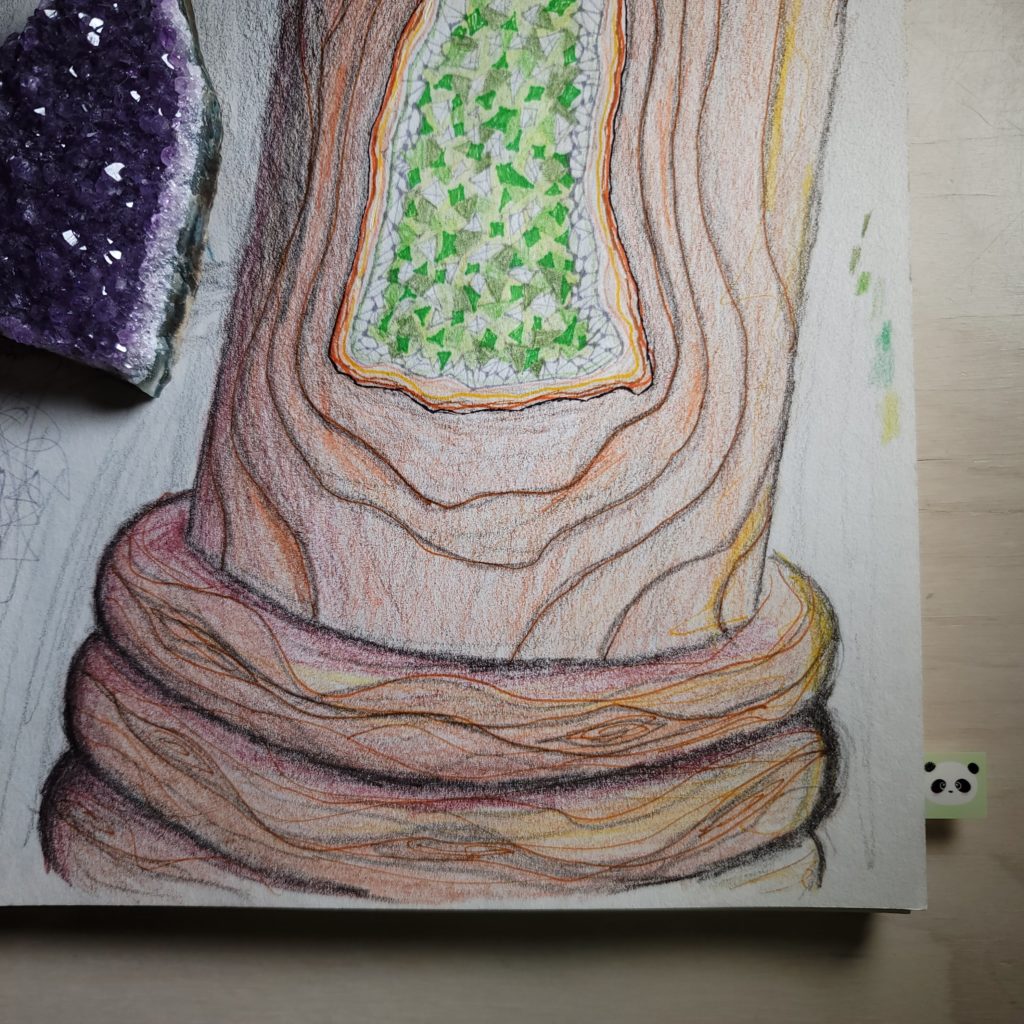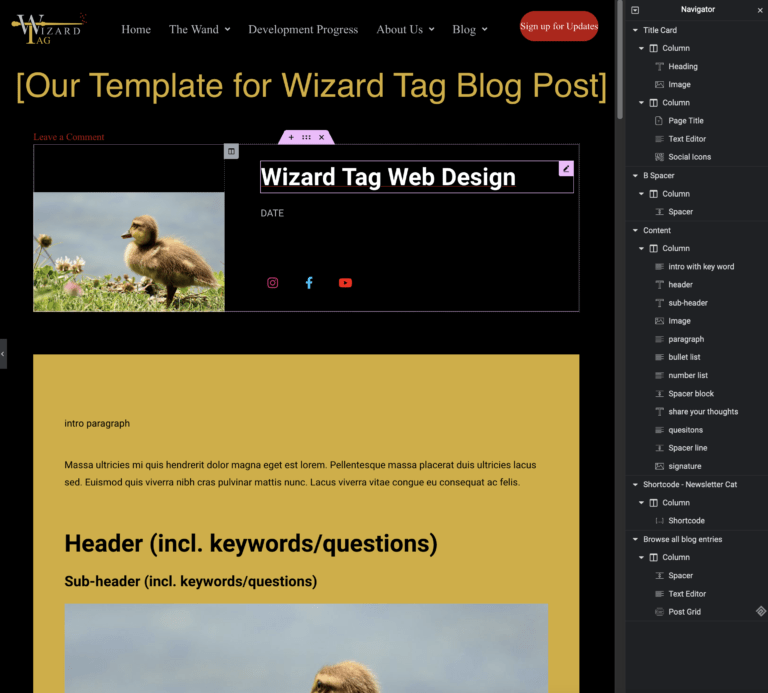Wizard Tag

The Wizard Tag Wand case went through many permutations. We wanted it to look traditional, but also to have unique components. As the “magical” contents of the wand grew, it became harder to make it look like a traditional finger-thick piece of wood.
Designing a Magic Wand

What style of wand is best for us?
Cally had ideas from the beginning that there should be crystals on the sides that resembled the broken open geodes. We went from the polished versions to the pointy fields of crystals that are common with amethysts. Some of the concept art had flat tips like a rabbit-from-the-hat magician, but those were soon discarded in favor of integrated crystal designs for the tip.

How to make a manufactured toy look realistic?
Case design involves so many considerations that we were not thinking of when we were brainstorming how the wands should appear. You have to think about how the parts connect. For us, we didn’t want to see seams or buttons, so those have to be engineered out. Depending on how the wands will be crafted (manufactured), you have to consider draft angles, which is the slope on features which can sometimes be as little as three degrees and appear to be a vertical feature. The thickness and thinness of parts are important. Using a 3-D printer for prototypes allows you to ignore things like undercuts, which are show-stoppers for injection molding. Some features can make manufacturing tools extremely expensive, so all of these factors are built into the design.
The fun part is the surface design. Cally came up with a great concept for the handle, which would look like a beehive with nested hexagons. This went through many changes, but ultimately kept the hex concept. The pommel, handle, and shaft of the wand will have the appearance of wood, through surface texturing and post-production finishing. The crystals will look milky-white, but will take on the colors determined by the wizard or at times, the game features.

Easter Eggs are always fun!
One feature that has always interested me in video games is the Easter egg. I once found an Easter egg in a helicopter flight simulator. I had completed my annual simulator instrument and emergency training and had another fifteen minutes in the simulator. I asked the operator to turn off the crash logic and had some fun hovering inches from the air traffic control tower, bouncing off the ground, and finally flying through buildings. There was a large hangar next to the runway I was training on and I began a slow hover towards the building. The hangar doors were closed, so I couldn’t see inside, and I slowly inched my way through the walls. There were tools laying around the workshop and on the wall was a calendar! I imagine it had something to do with the programmer’s birthday. I think it’s cool that he knew that eventually someone would go in there and find it.
The Celtic knot that adorns the pommel was an original design by Cally; made up of a “W” & “T” for Wizard Tag, and a “J” & “C” for Jon and Cally. We have Easter eggs in the logo and wand design as well. Eventually, there may be Easter eggs in the magical workings of the wand (software).
Share your thoughts in the comments below!
- What kind of hidden features do you remember from video games?
- What features do you like in a magic wand?

Want more Wizard Tag updates?
Follow our Progress as we create Laser Tag for Wizards!
#makingmagicreal
Browse the Latest Blogs:

Game Review: The Vale of Eternity
- 6 min read
- Date: May 12, 2024

Game Night: Root
- 4 min read
- Date: May 5, 2024

Wizard Tag Web Design
- 4 min read
- Date: April 28, 2024